Data Driven Marketing Produces Stronger Results
Are you using a data driven marketing strategy or just guessing?
Data as a word sometimes just sounds complicated to me. Am I the only one? In essence, it’s just facts and information. But it's understanding the context and knowing what to do with those facts and information that makes all the difference. In marketing especially this information is highly useful, and important, to take into consideration when making strategic decisions.
Data driven digital marketing produces results that are more effective and more precise than a generic marketing program. Working with a data driven marketing company, you can move and adapt in response to and in anticipation of changing customer behavior. Staying engaged with trends in the market as well as in technology will enable your company to stay relevant and digitally effective. In doing so you will reach and impact those you’re looking to make your lifelong customers.
Jump to a particular topic:
Take a look at your old data, learn what works, and make the shifts necessary to not only resonate with consumers (humans) but also dominate the marketing platforms (robots). We are no longer writing content to appeal just to the human psyche. In the digital age, we’re also convincing the Google bots that our content is worth showing to our target customers. How do we speak to them both?

We become bilingual! Just kidding…. sort of. We work with data in relation to our customers and platform algorithms and learn to anticipate shifts in consumer behavior as well as what triggers a favorable response on various media channels. Companies paying attention to the data set themselves apart to more effectively target their intended audience and become a top performer online. Their knowledge and capacity to move quickly and even be poised for explosive growth come from their data driven market research.
This is why data driven marketing decisions are so important.
When we assess performance from our marketing campaigns and use data to chart our next course of action, our future efforts become more tailored and intentional. Regardless of whether the data looks “good” or “bad” it’s data… information that helps us tweak our messaging and our strategy to better speak to our audiences.
We’ll discuss more than a few reflective questions here. If you’re in need of a jumpstart for how to liven up your marketing efforts, grab your preferred note-taking device(s) and jot down some of your company’s answers. It’s time to take a real look at how things are going so you can shift how you do marketing to produce better results.
It’s hard to analyze data if you don’t have any. If you are not utilizing digital marketing at all or you are not tracking your efforts it’s going to be hard to know where things need to change in order to improve. This is what we call ‘blind marketing’, taking a shot in the dark, or guessing.
Watch the responses to your social media campaigns, the emails you send to your customers, and your digital ads performance. Who is engaging? What is it telling you about your customer? How are they engaging (or not)? Do you need to craft better subject lines or email copy?

Done well, marketing generates a healthy ROI (return on investment), but if you’re just throwing mud on a wall to see what sticks, you’re surely wasting money. If you don’t have any numbers showing how your marketing dollars are converting into sales then it’s going to be hard to justify the marketing spend in the first place.
Let’s not do that.
Instead, let’s look deeply at the various facets of data driven online marketing and how data can help us make informed decisions and steer the marketing ship to higher conversions.
First, the basics. Who is your customer? What do you know about them? The more you can learn about your target audience, the more accurately you can speak to them and directly serve them through your products and services. Everything from where they live and work, to the weather, traffic, and neighborhood conditions they live with on a daily basis to their levels of education, work styles, and income bracket, knowing your customer will allow you to strengthen your messaging.
Customer data collection can come in a variety of ways, from simple to technical. First, who is already buying your product? Who was it originally designed for? Who are the people walking into your store? If you are online, you can collect information there and also draw inferences from behavioral patterns.

The customer data (the fancy term for customer information, remember?), that you glean should not be left on the shelf. Use all of it to determine the tone, personalize the message, and craft the method of your marketing. Here you get to learn how to speak the language of your customers and truly connect with them where they are.
Questions to consider: What is your customer demographic data? Where do they spend their time? Where do they spend their time online? Is that where you are? If you aren’t marketing where your ideal customers live, work, and play, how will they find you?
In marketing, we are not playing Hide and Seek with our customers. We want to be found!! Use whatever information and tools you can to position yourself in the most visible space.
Aside from learning how to market to gain attention from search engines (more on that later), a data driven marketing strategy is 100% centered around customer data and learning to apply specific insights about your buyers from various data sources to generate a greater ROI for all of your marketing channels. We want the time and effort we put into creating relationships with your clients and developing a great team to not be wasted by not using the data available.
Data gathered about your products and/or services speaks directly to those buying them, what they want, and what they are looking for. Simple tracking of inventory can provide insights into what the customer cares about as well as emerging trends. Savvy marketers will watch for patterns to evolve so they can take every opportunity to increase sales.

Consider brands, items, and topics that are similar to yours and find what consumers have researched. What is of interest to them? What are the benefits that they’re looking for? Do your products and services address these concerns and desires? Is your product/service something people want? Are there new channels of marketing or selling that need to be pursued so you’re targeting the right consumers?
Moving to a more detailed level of analysis, explore your buyers’ behavior. What does it tell you? What are they buying the most of? What do they seemingly not care about? Are there obstacles in the buying process affecting your conversion rate? Data gives us so much information! If we pay attention to what it’s saying, we’ll find where we need to focus our attention (and what’s wasting our time), what products we need to stock more of, and how we need to clarify our website design and copy so that we convert visitors into customers.

In a physical space, this holds true as well. Identify your best selling items and give them the marketing attention, and placement in your store, to capture shoppers’ attention and facilitate the sale. Pay attention to your customers’ spending habits and the various cycles that show increased spending (ie holidays) and adjust your strategies based on this data. Look for indicators that will clue you in on what products you need to prioritize during different seasons (eg back to school). Have your salespeople trained to notice any interesting trends that pop up, in store or in the market. The more data you’re able to implement into your marketing processes, the more you’ll be able to stay ahead of the curve in the ever-evolving business landscape.
Customer data driven marketing is about gathering information so your marketing performs better. Marketing performance is ultimately measured by increased revenue and profits. Therefore, any barriers you remove to make the customer journey simple and easy will lead to higher sales. Is that adjusting your store’s days and hours? Is that redesigning the layout of your showroom? Is that carrying more items in the color blue? Whatever amount of data you can glean, is meant to produce new insights and affect how you do business.
Let’s move into the digital arena, are you on social? Over 70% of American consumers are on social media 1 so it makes sense for your company to be there as well. As a whole, social media is generally used for brand awareness, but even the standard analytics that platforms give, provide better understanding to who your true audience is.

Here you can gain real time consumer responses to your various campaigns and learn how you need to adjust in order to expand your reach and engagement. Data will show you at what times your audience is online and what timezone they are in, important when posts become outdated and disappear off your feed within seconds.
Closely tied to social media marketing is email marketing which will also provide you with a substantial amount of data. Sending emails to your current customer base is still the number one most effective method of marketing currently. Be intentional here by sending tailored offers and relevant messages to your audience. Open rates and click through rates are the key indicators of how well you are executing your email marketing and where you have room for growth. Set goals for yourself in increasing either of these key elements.
For example, set a goal in the next 60 days to increase your email open rates by 10% and your click through rates by 3%. Watch your progress and adjust to new tactics if you see that what you’re doing isn’t getting you there. Marketing is a journey. Don’t be afraid to make adjustments as needed.
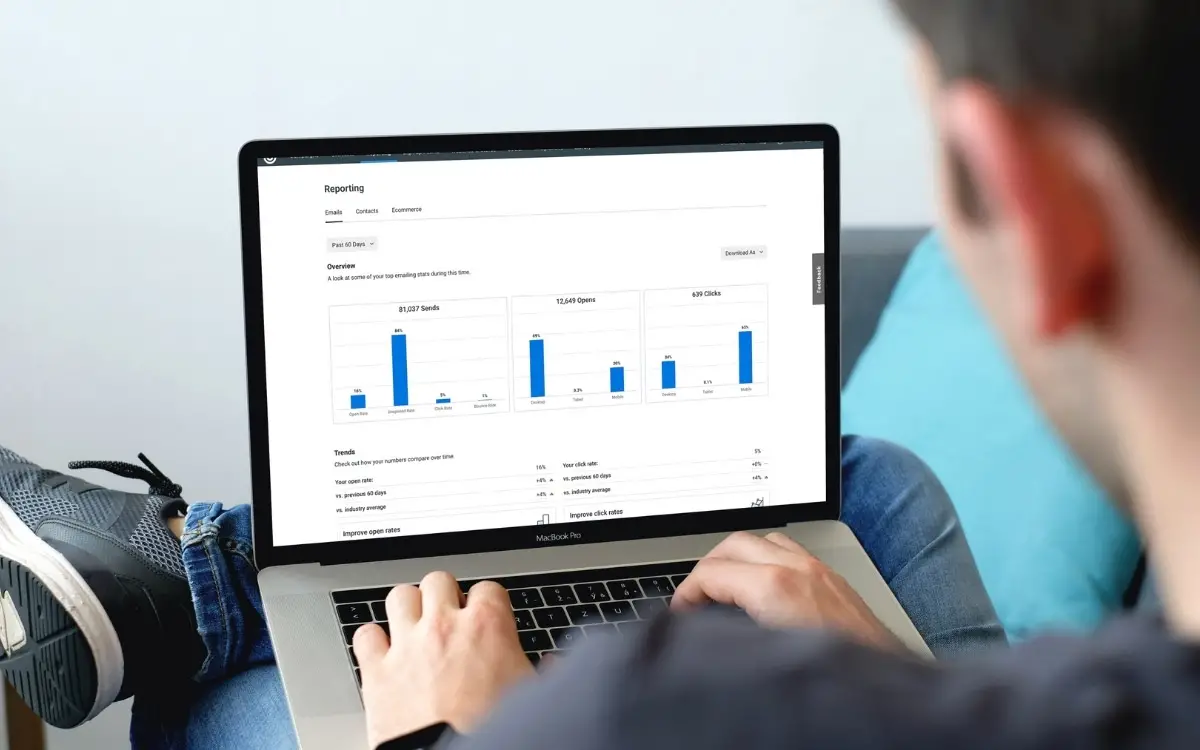
Use the segmentation options on your email platform to experiment with messaging and offers. Watch for noticeable changes in customer responses to campaigns that have a personalized subject line versus those that don’t.
People respond best to what is pertinent to them and what they care about. The CTR on your email campaigns will give you these answers removing a lot of the guesswork on what you should include in your marketing messages.
Next, let’s talk about your website. Basic analytics when it comes to your website is finding out how/where people are coming in and how/where they are leaving. Where is your website traffic coming from? How much of your web traffic is organic? How much is coming from paid ads or your social platform? Where are people dropping off? As in, on what page are people leaving your site? How quickly do people abandon your site?
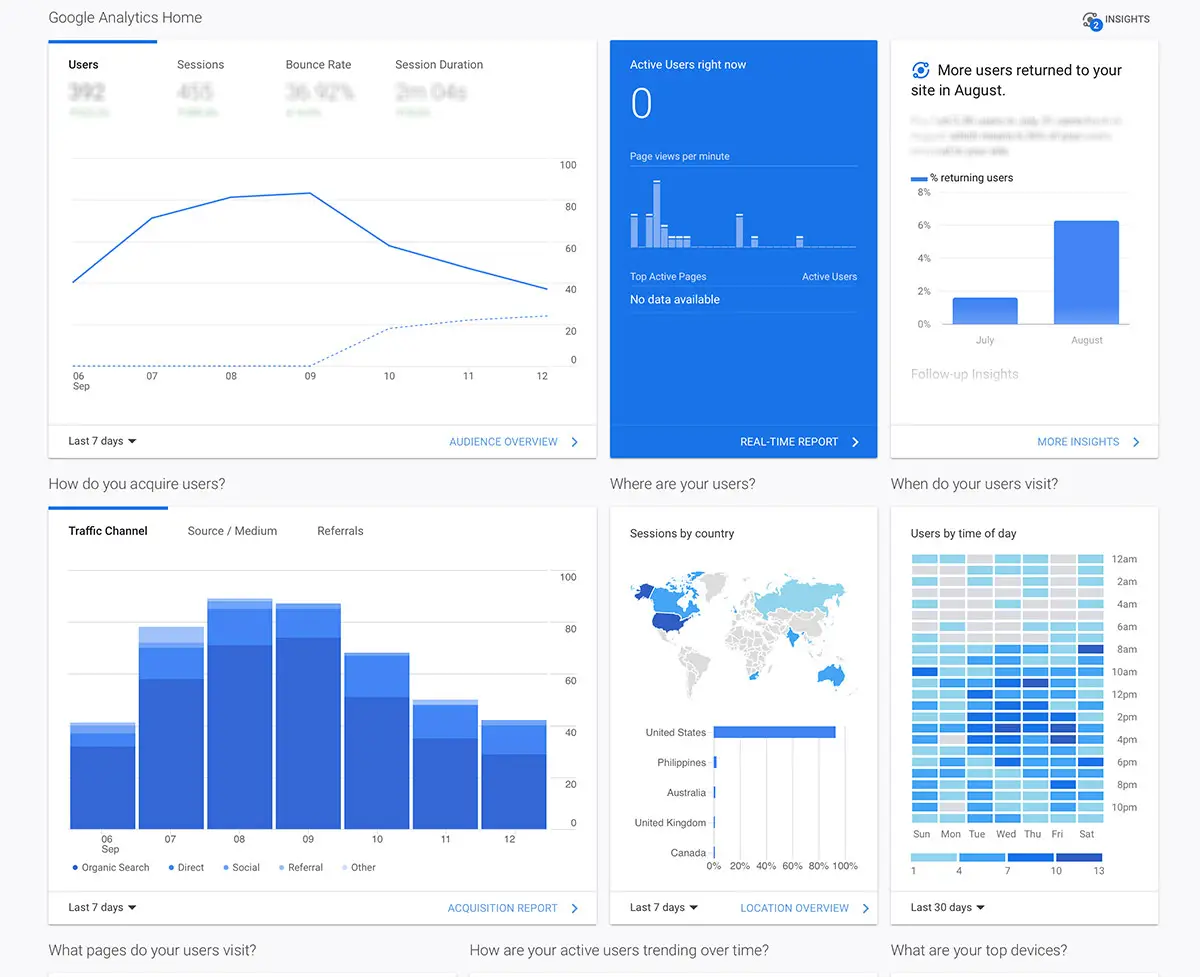
With these few bits of traffic data you can begin to address any concerns. Maybe your home page or landing page is confusing or unattractive causing visitors to bounce. Or maybe the people who land on your page just aren’t interested in your product or service. So which one is it? We have to accept that not everyone who lands on our website is going to be our next best customer, but there are tactics we can implement to capture as many prospects as possible.
Something simple is retargeting. Add a tracking pixel to your website so that anyone who visits and then leaves without making a purchase will then see your retargeting ads on various other platforms online. This will keep you top of mind and remind them that they really did mean to buy that pair of shorts or sign up for your gift box subscription service.
Assess your website heat maps to get a clearer view of your customer interaction with your site, what pages they are visiting, what calls to action they are clicking, etc. If you see a lot of traffic fall off at certain points, dig into those areas. Perhaps your web copy is unclear or the path to conversion is too complicated. Clear and simple! Or you will lose people and ultimately, the sale.
There is a lot of adjusting and tweaking to be done to determine the cause and effect of your digital presence as a whole so be intentional and be patient. Data-driven marketing solutions require a hands-on approach.
Here’s an example: You’re running an ad for your specific service and that ad links to a landing page. There you give an explanation on your service with a CTA (call to action) strategically placed at the top, middle, and bottom of the page. Your CTAs link to your pricing page where customers are able to select a monthly or annual service plan.
How data helps: Analyzing the tracking data on your landing page will tell you how people landed on your page. Either they clicked on your ad or they clicked another feeder link you have on the web. Which one is producing more leads? Which one is producing higher quality leads? Knowing this will remove the guesswork from our campaign planning and help us know where we need to be investing more of our ad spend.

Then, we look at people’s behavioral trends once on the landing page. Do they click on a CTA or not? If they take no action and quickly leave your page you could determine that either the information was not relevant to the viewer and they’re not interested in your service OR your content is confusing and your page needs attention. But which one is it?
If it is a small percentage of your visitors who bounce, we’ll assume they were just not in the market for your service. No worries, not everyone is your target audience and occasionally your site will receive random traffic.
However, if you’re not receiving any click throughs, then it’s time to look at your ad - is it set up correctly and is it showing to the right people? If all of the people landing on your page bounce, then you're not targeting the right audience. Readjust your ad parameters so that you do.
Look at your page itself, adjust the imagery and copy, and make sure it is appropriately speaking to those you’re trying to sell to. Make it clear and concise so within five-seconds, people can get the jist of your message.
Next, with heat maps set up on your landing page you can see which of your links are performing the best. This gives insight into your customers as well. Clicking on the top CTA indicates that the person who landed on your page is already highly interested in your service and didn’t need to read the explanation of what you’re offering. A high quality lead! Your ad is showing to the right people. More clicks further down the page shows that people are taking the time to read your content before moving to the next stage of the buying process. Also a good sign.
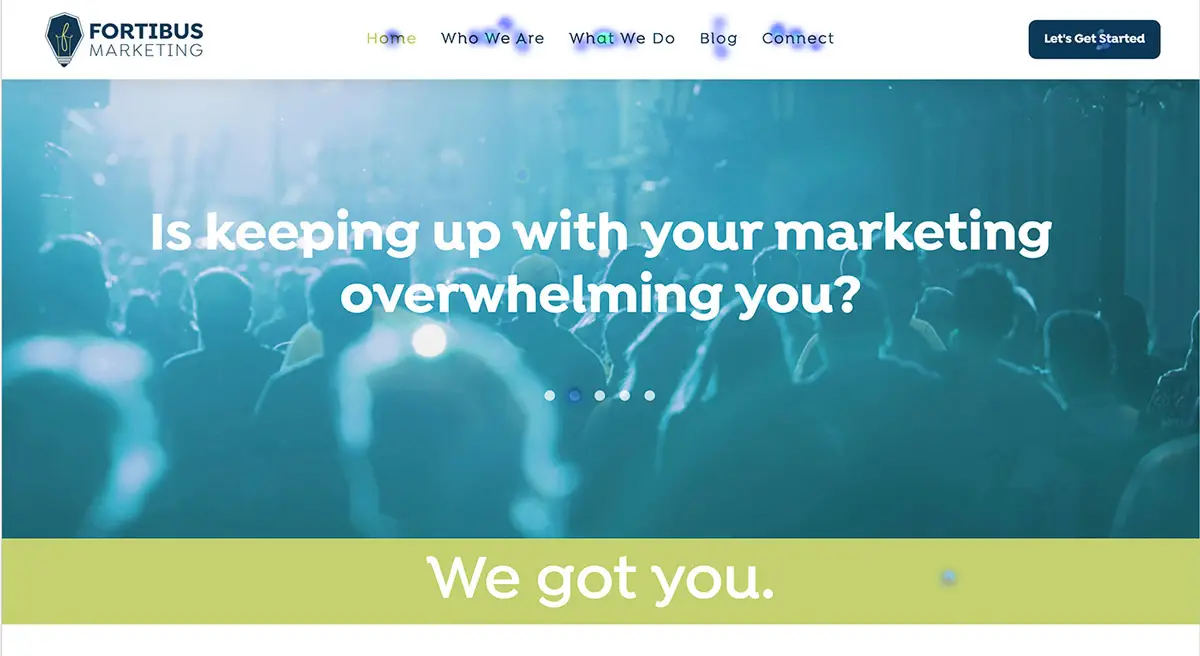
Moving through the process, we look at the activity on your pricing page. Are you seeing conversions? The sales process is often seen as a funnel so it’s normal to see people fall off at each stage but if you’re getting zero conversions then we can see that something is broken along the way and, in the end, the price point is not right.
Recently, one of our clients was having an issue with their website not converting into sales. They were ranking highly in searches for their industry but they weren’t generating the business they were looking for. Analyzing their data traffic and user experience, we saw room for improvement in their website layout and design. With a redesigned website that was also optimized for SEO, they started seeing viable leads come in in the first week!
With an updated website, our client now has more and better data to analyze going forward so they can continue to monitor and improve their user experience which will only increase the amount of leads and sales they receive.
If you don’t have tracking on your website, how are you going to collect the data you need? How will you know where your traffic is coming from and if they are the right kind of traffic?
We touched on ads in the example above, but there is plenty more to say here too. Data drives everything when it comes to PPC (pay per click) ad campaigns. How an ad performs determines how you need to adjust the campaign to improve its results.
First, you must clearly define your target audience and set the search parameters so that your ad shows to those you’re wanting to reach aka those you’re looking to turn into new customers. You can also set up negative keywords so that your ads do NOT show up in the searches that do not make sense for your business.
If you haphazardly launch ads without a defined goal, you’ll end up spending way too much money on an ad campaign that’s showing up to people who find your service irrelevant and are not in the market to buy from you.

Research what people are searching for and utilize this information in adjusting your ads. Don’t just throw mud on the wall and see what sticks. Be intentional and get creative in the process. If you’re not showing up for the right searches, figure out new search terms and keywords that you can put into play. Most problems with a PPC campaign arise when you haven’t defined what ROI you need, your specific goal for the campaign, or your specific target audience.
Are your ads not generating the revenue that makes sense? Take a hard look at your quality score. This is an aggregate of the quality of your ad copy, your landing page, keywords, etc., you’re trying to use. Improving your quality score will strengthen your PPC reputation, so to speak, and move you up in search results and cost you less.
Show up for the RIGHT stuff to get the customers that you WANT.
Performing a split test is another good practice with ads. Testing different creative messaging or different imagery will help determine which strategy converts better.
A good mantra for a data driven ppc campaign is “Do. Examine. Adjust. Do.” This will get you where you want to go.
At its core, search engine optimization is based on the content on your website. The web bots scan your content and then determine which web searches you should show up for. The strength of your SEO can be seen by your ranking in search results. If you are further down than the first few spots, your traffic will suffer. To improve in this area will take some time and research. You can employ the help of an SEO expert or work on doing an overhaul of your website copy.
Gain the attention of search engines by incorporating industry specific and pertinent keywords that people are searching for. Make adjustments and then monitor the results.
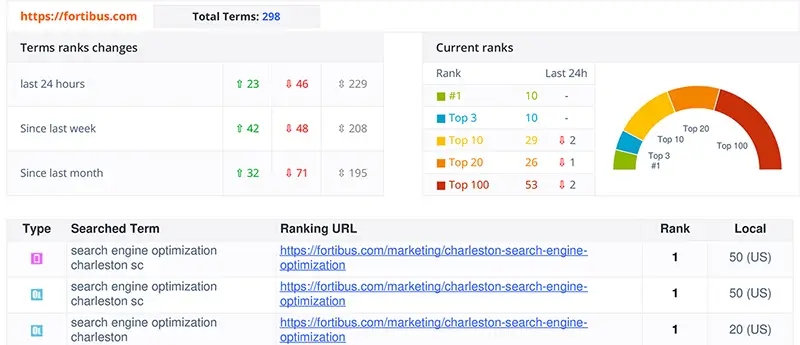
As our SEO expert, Alex, says, “You have to track or you’re just guessing in the dark.” Data driven marketing at its core, is making marketing decisions based on the available information. Yes, it takes time and intention to sort through data and draw conclusions but even an informed guess is better than a blind guess when it comes to marketing.
So… collecting more data is always better. :)
There is no one-size fits all formula, and precision marketing is not static. Culture and markets are continually changing so don’t get comfortable with what’s worked before or outdated data. Adopt a more agile marketing approach that is intent on capturing new data, researching case studies and how competitors have utilized data to their advantage, and how to problem solve when challenges arise.
The real question is, “Who isn't?” If you're not using data to drive your marketing decisions you are falling behind.
Need a final example as we wrap up?
Red Roof Inn sees continual data-driven growth by taking advantage of historical data in weather patterns. Their marketing teams plan targeted messages to those stranded at airports due to cancelled flights. Using digital advertising in areas of demand their mobile ads contain tailored messaging like “Stranded in Atlanta? Check out Red Roof Inn” with direct links to their booking page. 2.
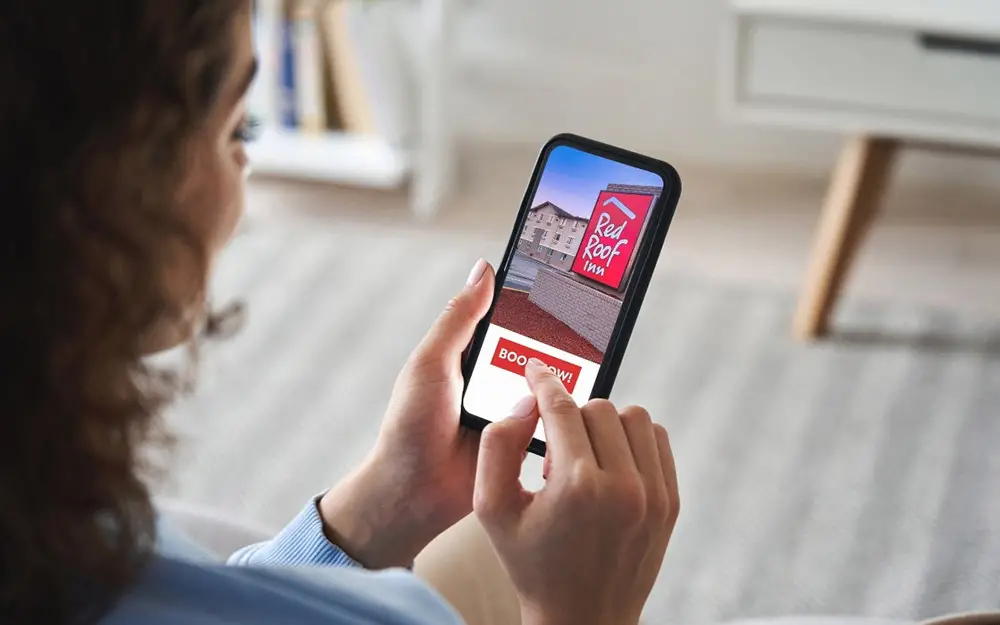
The uses of data are vast. With the right intel, you can diagnose problems in how you currently do things; learn to leverage algorithms on social media and search engines; and identify the biggest opportunities in how to reach and serve your customers.
Start thinking more out of the box. Consider what data sources and data strategies are already at your fingertips that you can begin to utilize in your day to day operations. Then:
Do. Examine. Adjust. Do.
- Statista Research Department June 15, 2021 Social Media usage in the United States - Statistics & Facts, Statista
- Rob Peterson 2016 37 Big Data Case Studies with Big Results, Mark Schaefer, {grow}






